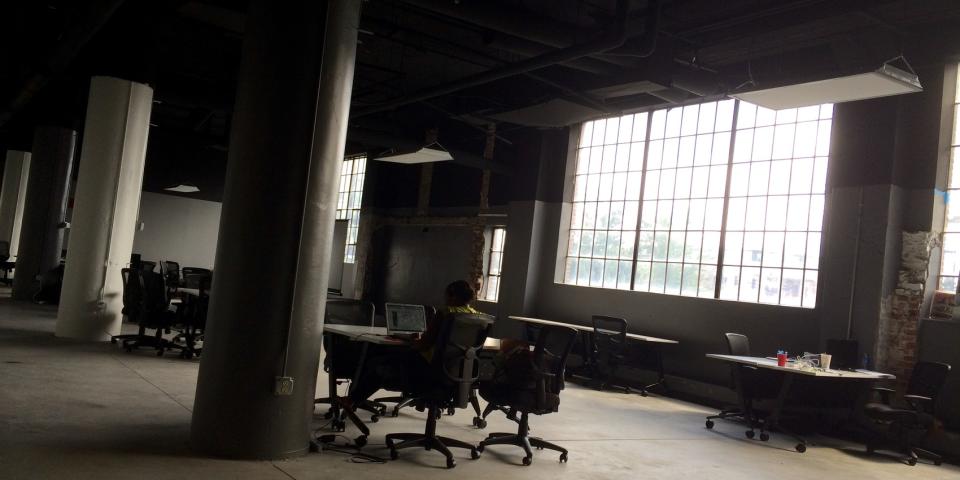Understanding Why Your Broadband Is Slow

The UK Government have recently announced a Universal Service Obligation (USO) which will give people and businesses a legal right to request a 10Mbps broadband connection by 2020, no matter where they live.
The USO has specifically cited a broadband speed of 10 Mbps as this is the miniumum speed that a typical business or home will require in 2020, according to Ofcom.
Whilst this is a long way off, the news has sparked fresh debates about current broadband speeds with many people saying that they don't get the speed they are paying for. There are a number of factors that can impact your broadband speed, this short guide will hopefully help you find out if you have slow broadband and what to do about it.
Do You Have Slow Broadband?
Before you go on to see why your broadband is so slow you should test the speed of your connection. This is easy to do as there are many broadband speed checkers and testing programmes online. You can find them through the search engines or on many comparison sites and troubleshooting sites. Once you have tested your connection you can see if you are in line with the UK average or if you are not getting anywhere close to the speeds you should.
What Time of Day Is It
Something that most broadband users do not take into account is the time of day when they are connecting. Like most things in life there are peak times in the broadband industry. During these peak times your normally fast connection will slow down. This is basically due to the demand on the network.
The most common peak times are over the weekend when most people are at home and have the ability and time to go online. The reason why peak times cause slower speeds is because all broadband infrastructure is shared between a number of people. If all the people decide to use the connection at one time it is like everyone using a single lane on the road. The line becomes congested and everyone's speeds will slow down. There is not much you can do about these slow speeds.
Providers have tried to make it easier for their clients during these peak times by offering shaped broadband packages. With these shaped packages most ADSL users should not have too much trouble with slow peak times. However, people using mobile broadband will have serious issue at peak times.
The reason why mobile broadband is different has to do with the number of mobile devices trying to connect to the network. A lot of people in the UK have two mobile devices that connect to mobile broadband. If all of these devices try to use the network at the same time the demand will be too great for the network infrastructure. In these cases even your provider will have a hard time doing anything to help the situation.
Where Do You Live or Where Are Your Offices?

There are certain connection types that are affected by where you are located. The two connection types that are affected by this are ADSL and mobile broadband connections. ADSL works off the phone lines and the speed of your connection will vary depending on your phone line infrastructure.
The main factor in slow ADSL connection speeds in relation to location is where your local exchange is. If you are close to the exchange your speeds should be quite good. However, the further from the exchange you get the slower your connection will be. This is something that does not affect too many people in the cities as there are more exchanges in urban areas. If you live in the country or on the outskirts of the town then you may have some problems. The reason for this is that it is not cost effective for providers to run a big phone line network in the country for a handful of people.
When it comes to mobile broadband around 90% of the country can get mobile signal. However, this means that 10% of the country is out of coverage range. If you are in the 10% you will not be able to get mobile broadband. Of course even if you are in the coverage zone the broadband you get could be rather slow.
Mobile broadband is transmitted to you via the mobile phone towers. If you are very far from the tower the signal strength will be weaker. If there are a number of buildings between you and the tower the signal strength will also be weaker. It is possible that large electrical fields like those around pile-ons can affect the signal being sent to you as well.
The type of mobile connection you are getting will also be affected by your location. 3G connections are available to everyone in coverage zones because this is the standard for mobile broadband. If you have decided to get a 4G connection you will be more limited. The 4G network offers greater speeds overall but the connection is limited to cities at the moment. This is bound to change over time.
Are there Any Alternatives?
Out of all the broadband connections used the ones affected the most by location and times are ADSL and mobile broadband. The question you may be asking yourself is whether there are any alternatives you can use. Fibre optic broadband connections are less likely to be affected by these two factors. For people in rural areas who are severely affected by their location it is possible to get satellite broadband.
Fibre optic broadband is the most commonly used alternative. The infrastructure for this connection has been rolled out to 60% of the country and there are plans to continue laying down the network. Cable broadband offers greater speeds than ADSL and mobile broadband so even if you do have a dip in speeds you are still faster than most.
Satellite broadband is not the best option for anyone and is seen as more of a last resort. This broadband costs much more than others and requires special hardware to be installed. Of course this signal does not have any black-spots which is good for people who cannot get other broadband. However, it is not only expensive but the speeds offered do not measure up to the other alternatives.
